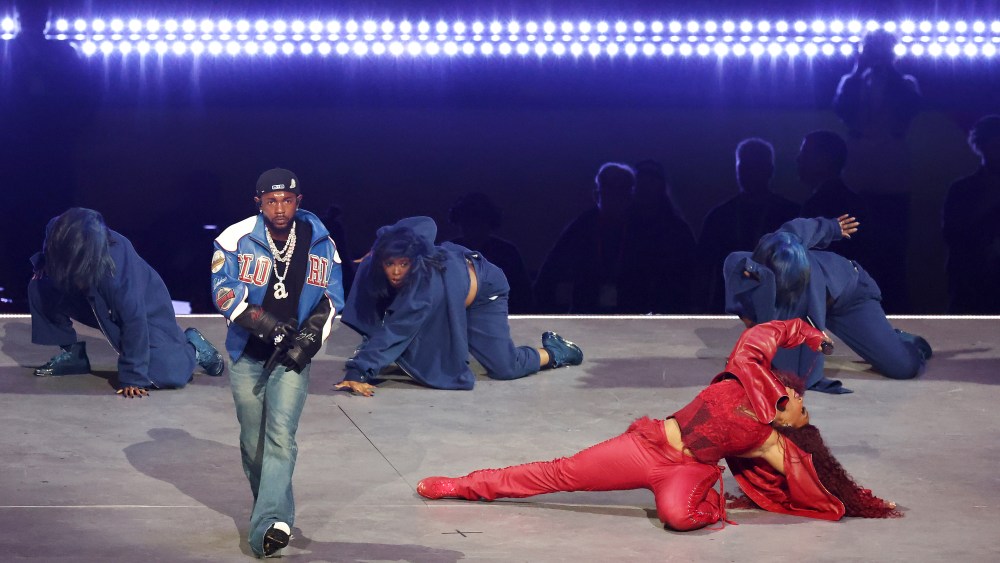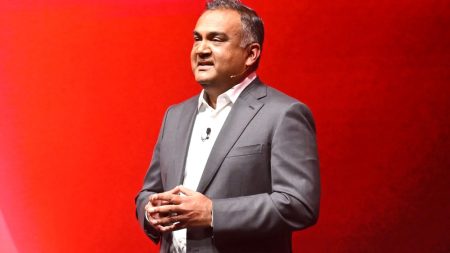Kendrick Lamar’s electrifying halftime performance during the 2024 Super Bowl was nothing short of a cultural phenomenon, leaving an indelible mark on both the music industry and the millions who tuned in. The aftermath of his 13-minute medley, which showcased his incredible artistry and storytelling, saw his music streams skyrocket on Spotify. According to data released by the platform, his song “Not Like Us” experienced an astronomical 430% surge in streams in the hours following the performance. This wasn’t an isolated spike—nine other songs from his setlist also saw significant gains, with an overall increase of 175% across his discography. The numbers paint a clear picture: Kendrick Lamar’s performance was a masterclass in blending music, culture, and spectacle, reigniting interest in his work and cementing his status as one of the most impactful artists of our time.
The performance itself was a meticulously crafted celebration of Kendrick’s roots and rise to fame. Taking place on the biggest stage in the world, it featured a star-studded lineup, including SZA, Samuel L. Jackson, Serena Williams, and Mustard, all of whom played roles in paying homage to his hometown of Compton, California. The setlist, dominated by tracks from his freshly released album “GNX”, showcased Kendrick’s ability to seamlessly blend his newer work with fan-favorite cuts from his deeper catalog. With Samuel L. Jackson dressed as Uncle Sam, the performance carried an unmistakable American flag color palette, symbolizing both Kendrick’s national influence and his unapologetic take on American culture. Tracks like “DNA,” “Peekaboo,” “Squabble Up,” and “Humble” were delivered with the kind of intensity and precision that fans have come to expect from him, proving once again why he’s often hailed as a modern-day radical in music.
One of the most talked-about moments of the performance was Kendrick’s handling of “Not Like Us,” his controversial Drake diss track that has been a lightning rod for attention. Despite the song’s polarizing nature—especially its stark accusations against Drake—it’s undeniable that “Not Like Us” has become a cultural touchstone. Winning five Grammys, including Song and Record of the Year, the track’s dominance in 2024 spilled over into the following year, making it one of the most important songs of the past two years. The question on everyone’s mind leading up to the Super Bowl was whether Kendrick would perform it on such a massive platform. The answer, of course, was yes. Kendrick Lamar has never been one to shy away from controversy or shy away from taking risks. If anything, he thrives on it. Performing “Not Like Us” wasn’t just a bold move; it was a testament to his unwavering confidence and his ability to push boundaries in the most public of forums.
The aftermath of the performance was a testament to its impact. Streams for “Not Like Us” skyrocketed by 430%, while other songs from his setlist, like “HUMBLE.” (+300%), “All The Stars” (feat. SZA, +290%), and “DNA.” (+260%), also saw massive upticks. Even deeper cuts and collaborations, such as “man at the garden” and “euphoria,” experienced significant gains, proving that Kendrick’s performance didn’t just draw attention to his newest work but also reignited interest in his entire catalog. The numbers aren’t just impressive—they’re a clear indication of how live performances, especially ones as iconic and talked-about as Kendrick’s, can breathe new life into an artist’s discography. In an era where streaming dominance is crucial, moments like these remind us of the power of live music to connect with audiences and drive engagement.
The broader cultural implications of Kendrick’s performance shouldn’t be overlooked, either. His decision to use the Super Bowl stage to celebrate his Compton roots and bring collaborators like SZA, Samuel L. Jackson, and Serena Williams into the fold sent a powerful message about representation and community. It wasn’t just a performance; it was a celebration of Black excellence, creativity, and resilience. Kendrick’s ability to weave personal and societal narratives into his music is part of what makes him so compelling, and this performance was no exception. By blending the personal with the political, he once again reminded us why he’s not just a rapper but a cultural figurehead.
The success of Kendrick Lamar’s halftime show and its aftermath also raise important questions about the future of music and live performance. In an age where streaming numbers often dictate an artist’s relevance, moments like these prove that live performances can still be game-changers. They don’t just boost an artist’s metrics; they create moments that resonate with fans on a deeper level. Kendrick’s ability to leverage such a massive platform to promote his music, celebrate his roots, and challenge societal norms is a testament to his genius and his commitment to using his voice for more than just entertainment. As we look ahead, it’s clear that Kendrick Lamar will continue to be a driving force in music and culture, pushing boundaries and breaking records along the way. His Super Bowl performance was more than just a show—it was a statement, and one that will be remembered for years to come.









